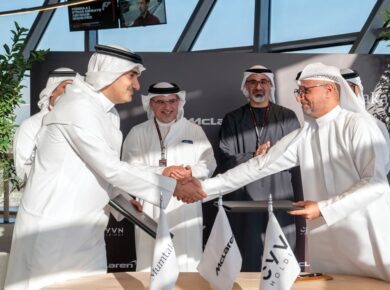An MoU has been signed by Saudi Arabia and the Netherlands to collaborate on green energy.
Green hydrogen production received a boost on Thursday as Saudi Arabia signed a memorandum of understanding with the Netherlands to cooperate in developing the clean gas. The MoU was signed on the sidelines of the World Hydrogen Summit in Rotterdam, which was attended by representatives from across the global hydrogen industry.
The agreement marks a significant step forward in the global pursuit to reduce the carbon footprint and accelerate the shift towards clean energy sources. Green hydrogen, which is produced using renewable energy sources, is seen as a key component of this transition, with many experts predicting that it could play a major role in decarbonizing a range of industries, from transportation to manufacturing.
The MoU between Saudi Arabia and the Netherlands is aimed at promoting cooperation in the development of green hydrogen, as well as accelerating its production and commercialization. The two countries will work together to exchange knowledge and expertise in the field, as well as exploring opportunities for joint projects and investments.
During the event, Abdulaziz bin Salman, Saudi Arabia’s energy minister, highlighted the potential for the Netherlands to become a key destination for transporting hydrogen from renewable energy sources from the Kingdom to Europe. This would involve the use of advanced storage and transportation infrastructure, including pipelines and shipping routes.
The energy minister also stressed the importance of collaboration between countries in the development of green hydrogen, saying that it was vital to ensure the efficient and sustainable deployment of the technology. He praised the Netherlands for its leadership in the field, citing its ambitious plans to develop a green hydrogen industry and its expertise in developing advanced hydrogen infrastructure.
The MoU between Saudi Arabia and the Netherlands comes at a time when interest in green hydrogen is growing rapidly around the world. Many countries are now investing heavily in the development of the technology, with the aim of using it to replace fossil fuels in a range of industries. The European Union, for example, has set a target of producing 10 million tons of renewable hydrogen by 2030, while China has announced plans to build a “hydrogen city” that will be powered entirely by the gas.
However, there are still significant challenges facing the development of green hydrogen, including the high cost of production and the need for advanced infrastructure to transport and store the gas. These challenges have led some experts to question whether green hydrogen will be able to compete with other clean energy sources, such as wind and solar power.
Despite these challenges, there is growing optimism about the potential of green hydrogen, with many experts predicting that it could play a major role in the transition to a low-carbon economy. The International Energy Agency, for example, has estimated that hydrogen could meet up to 18% of the world’s energy needs by 2050, with the majority of this coming from renewable sources.
The MoU between Saudi Arabia and the Netherlands is just one example of the growing collaboration between countries in the development of green hydrogen. Other countries, including Germany, Japan, and Australia, are also investing heavily in the technology, and there are now a number of international initiatives aimed at promoting the development of a global hydrogen industry.
As interest in green hydrogen continues to grow, it is likely that we will see more partnerships and collaborations between countries, as well as increased investment in the development of advanced infrastructure and new technologies. While there are still many challenges to be overcome, the potential benefits of green hydrogen are too significant to be ignored, and the global pursuit to reduce the carbon footprint is likely to continue to drive demand for the clean gas in the years to come.





